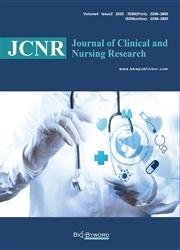Analysis on Distribution and Drug Resistance of Pathogenic Bacteria in ICU Patients with Nosocomial Infection from 2019 to 2021
引用次数: 0
Abstract
Objective: To understand the pathogenic bacteria isolated from patients and their drug resistance changes in general ICU of the Affiliated Hospital of Hebei University, so as to provide reference for appropriate selection of antibiotics in clinical practice. Methods: A retrospective investigation was conducted to analyze the bacteriological distribution and drug resistance of nosocomial pathogens isolated from the specimens of hospitalized patients in the comprehensive ICU of the hospital from 2019 to 2021. The US technology BD Phoenix 100 automatic bacterial identification analyzer was used for bacterial identification of the pathogen samples, disk diffusion method was used for drug susceptibility test, and SPSS 22.0 software was used to analyze the trend of drug resistance. Results: A total of 970 strains of nosocomial pathogens were detected in the three years. The main pathogens were Acinetobacter baumannii (133 strains, 13.71%), Klebsiella pneumoniae (106 strains, 10.93%), Pseudomonas aeruginosa (83 strains, 8.56%), Escherichia coli (76 strains, 7.84%) and Enterococcus faecium (69 strains, 7.11%). The resistance rate of Acinetobacter baumannii to antibiotics was high. Klebsiella pneumoniae, Pseudomonas aeruginosa and Escherichia coli had low resistance rates to carbapenems. The situation of bacterial drug resistance is still serious. Conclusion: The drug resistance of pathogenic bacteria collected from Class III Grade A Hospital’s patients to antibiotics was generally high. Therefore, clinical departments should strengthen the inspection of specimens of infection and drug sensitivity test in order to grasp the resistance mechanisms and drug resistance of pathogenic bacteria changes, and select appropriate antimicrobial agents according to the test results. Besides, the formation of drug-resistant strains also needs to be prevented, and the treatment of patients with severe infection needs to be improved.2019 - 2021年ICU院内感染病原菌分布及耐药性分析
目的:了解河北大学附属医院普通ICU患者分离的病原菌及其耐药变化情况,为临床合理选用抗生素提供参考。方法:回顾性调查分析2019 - 2021年该医院综合ICU住院患者标本中分离的院内病原菌的细菌学分布及耐药情况。采用美国技术BD Phoenix 100全自动细菌鉴定分析仪对病原菌样品进行细菌鉴定,采用圆盘扩散法进行药敏试验,采用SPSS 22.0软件分析耐药趋势。结果:3年共检出院内病原菌970株。主要病原菌为鲍曼不动杆菌(133株,占13.71%)、肺炎克雷伯菌(106株,占10.93%)、铜绿假单胞菌(83株,占8.56%)、大肠杆菌(76株,占7.84%)和屎肠球菌(69株,占7.11%)。鲍曼不动杆菌对抗生素的耐药率较高。肺炎克雷伯菌、铜绿假单胞菌和大肠杆菌对碳青霉烯类药物的耐药率较低。细菌耐药形势依然严峻。结论:“三甲”医院患者病原菌对抗生素的耐药性普遍较高。因此,临床科室应加强对感染标本的检查和药敏试验,以掌握病原菌的耐药机制和耐药变化,并根据试验结果选择合适的抗菌药物。此外,耐药菌株的形成也需要预防,重症感染患者的治疗也需要改进。
本文章由计算机程序翻译,如有差异,请以英文原文为准。
求助全文
约1分钟内获得全文
求助全文

 求助内容:
求助内容: 应助结果提醒方式:
应助结果提醒方式:


